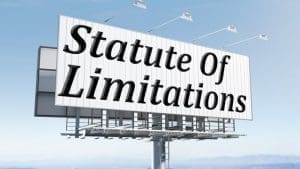Construction Site Safety Regulations: A Comprehensive Guide to Legal Rights and Compliance Requirements
Construction industry professionals and legal practitioners frequently ask, “What are the essential legal frameworks governing construction site safety regulations, and how do they impact both worker rights and employer obligations?” Construction site safety regulations represent a complex web of federal, state, and local legal requirements designed to protect workers while establishing clear liability frameworks for employers, contractors, and property owners. Unlike general workplace safety guidelines, construction-specific regulations address the unique hazards of building, demolition, and infrastructure projects through detailed compliance mandates that carry significant legal and financial consequences for violations.
Federal regulations under the Occupational Safety and Health Administration (OSHA) form the baseline for construction safety compliance, while state laws often impose additional requirements that reflect regional priorities and local conditions1. The intersection of these regulatory frameworks creates a comprehensive legal structure that balances worker protection with business operational needs, requiring construction professionals to navigate multiple layers of compliance while maintaining constitutional protections for all parties involved.
What Constitutional Protections Apply to Construction Safety Enforcement?
Constitutional protections under the Fourth and Fifth Amendments establish fundamental limits on government safety inspections and enforcement actions at construction sites. The Fourth Amendment’s protection against unreasonable searches requires that OSHA inspectors obtain proper warrants or establish probable cause before conducting comprehensive site inspections, though certain exceptions exist for imminent danger situations and routine compliance checks.
The Due Process Clause of the Fifth Amendment ensures that construction companies and workers receive fair treatment during safety enforcement proceedings. This includes adequate notice of alleged violations, opportunities to contest citations, and access to administrative hearings before impartial adjudicators. Courts have consistently recognized that due process rights extend to both procedural fairness in enforcement actions and substantive protections against arbitrary regulatory interpretations.
Equal protection principles prevent discriminatory enforcement of safety regulations based on company size, geographic location, or other characteristics unrelated to actual safety compliance. OSHA must apply consistent standards when evaluating construction sites, ensuring that small contractors receive the same procedural protections as large corporations during enforcement actions.
The constitutional framework also protects employers’ property rights by requiring that safety orders be based on legitimate regulatory authority and supported by substantial evidence. Construction companies cannot be subjected to arbitrary safety mandates that lack proper legal foundation or exceed the scope of delegated regulatory power.
How Do Federal Regulations Establish Construction Safety Standards?
Federal regulations codified in 29 CFR Part 1926 create comprehensive safety standards specifically tailored to construction industry hazards. These regulations address fall protection, electrical safety, excavation requirements, scaffolding standards, and personal protective equipment mandates that apply to all construction projects regardless of size or location.
OSHA’s construction safety standards operate under the General Duty Clause, which requires employers to provide workplaces “free from recognized hazards” even when specific regulations do not address particular situations. This broad mandate enables enforcement actions against unsafe conditions that may not be explicitly covered by detailed regulatory provisions.
Regulatory enforcement mechanisms include scheduled inspections, complaint-driven investigations, and accident response protocols that can result in citations, fines, and shutdown orders for serious violations. The agency’s authority extends to both civil penalties and criminal referrals for willful violations that result in worker deaths or serious injuries.
Recent updates to federal construction safety regulations in 2025 have strengthened requirements for personal protective equipment fit testing, heat illness prevention, and fall protection systems. These enhanced standards reflect evolving understanding of construction hazards and demonstrate the dynamic nature of safety compliance requirements.
What Are the Most Common Construction Safety Violations?
Safety violations in construction most frequently involve fall protection failures, which account for approximately 30% of all construction-related fatalities according to OSHA data. Common fall protection violations include inadequate guardrail systems, improper scaffolding construction, and failure to provide personal fall arrest systems for workers at heights exceeding six feet.
Electrical safety violations represent another significant category, particularly involving improper grounding, inadequate circuit protection, and unsafe installation practices. These violations often result in serious injuries or deaths due to electrocution, making them high-priority enforcement targets for regulatory agencies.
Personal protective equipment non-compliance creates widespread liability exposure for construction employers. Recent regulatory changes require not only provision of appropriate PPE but also proper fit testing, regular inspection, and documented training on equipment use and maintenance requirements.
Excavation and trenching violations frequently involve inadequate protective systems, improper slope angles, and failure to inspect excavated areas before worker entry. These violations carry particularly severe consequences due to the high fatality rates associated with cave-ins and related excavation accidents.
How Do State Laws Supplement Federal Safety Requirements?
State compliance requirements often exceed federal minimum standards, creating additional legal obligations for construction employers operating in multiple jurisdictions. States like California, New York, and Washington maintain their own occupational safety and health plans that impose more stringent requirements than federal OSHA standards.
State workers’ compensation laws create additional incentives for safety compliance by establishing presumptions of coverage for construction injuries and providing expedited benefits for injured workers. These state-specific provisions can significantly impact the financial consequences of safety violations beyond federal penalties.
Local regulations at the city and county level may impose additional safety requirements, particularly for high-rise construction, public works projects, and developments in sensitive environmental areas. Understanding these layered regulatory requirements is essential for maintaining comprehensive compliance across different jurisdictions.
State licensing requirements for construction professionals often include safety training components and continuing education mandates that reinforce federal safety standards while addressing region-specific hazards and practices.
What Legal Liability Consequences Flow from Safety Violations?
Legal liability for construction safety violations extends beyond regulatory penalties to include civil lawsuits, criminal charges, and administrative sanctions that can threaten business survival. Construction companies face potential liability to injured workers, their families, and third parties affected by safety failures.
Workers’ compensation insurance provides some protection against employee injury claims, but does not shield employers from regulatory penalties, third-party lawsuits, or criminal prosecution for willful safety violations. The exclusive remedy doctrine that typically protects employers from employee lawsuits may not apply when safety violations constitute intentional conduct.
Criminal liability can result from willful safety violations that cause worker deaths, with potential charges ranging from misdemeanor violations to felony manslaughter depending on the circumstances and applicable state laws. Corporate officers and supervisors may face personal criminal liability for safety decisions that result in serious injuries or deaths.
Civil lawsuits by injured workers’ families, property owners, and other third parties can result in substantial monetary judgments that exceed insurance coverage limits. These lawsuits often involve complex liability theories based on negligence, strict liability, and violations of safety statutes.
How Do Modern Technologies Impact Construction Safety Compliance?
Workplace safety has been revolutionized by technological advances including artificial intelligence monitoring systems, wearable safety devices, and real-time hazard detection platforms. These technologies enable proactive safety management while creating new categories of compliance requirements and potential liability exposures.
AI-powered safety monitoring systems can detect violations such as missing personal protective equipment, unsafe work practices, and hazardous conditions with accuracy rates exceeding 90%. However, implementation of these systems raises questions about worker privacy, data security, and the appropriate balance between safety and surveillance.
Digital documentation requirements for safety training, equipment inspections, and incident reporting have streamlined compliance processes while creating new obligations for data management and record retention. Electronic safety management systems must comply with regulatory requirements while protecting sensitive worker information.
Virtual reality training platforms and Building Information Modeling (BIM) integration provide enhanced safety education opportunities while creating new standards for competency demonstration and training documentation. These technological advances are reshaping how construction companies approach safety training and compliance verification.
What Are the Key Components of Effective Safety Compliance Programs?
Compliance requirements for construction safety extend beyond basic regulatory adherence to encompass comprehensive safety management systems that integrate planning, training, monitoring, and continuous improvement processess. Effective programs must address both specific regulatory mandates and broader safety culture development.
Site induction programs ensure that all workers receive appropriate safety orientation before beginning work, including hazard identification, emergency procedures, and specific site safety requirements. These programs must be documented and regularly updated to reflect changing site conditions and regulatory requirements.
Training requirements mandate ongoing safety education for workers, supervisors, and safety personnel, with specific competency requirements for high-risk activities such as scaffolding, excavation, and electrical work. Training documentation must be maintained and made available during regulatory inspections.
Incident reporting and investigation procedures ensure that safety failures are promptly identified, thoroughly analyzed, and used to prevent similar occurrences. These procedures must comply with regulatory notification requirements while supporting continuous safety improvement efforts.
How Do Worker Rights Interact with Safety Regulations?
Worker rights under construction safety regulations include the right to refuse unsafe work, report safety violations without retaliation, and receive appropriate safety training and equipment. These rights are protected by federal and state laws that prohibit employer retaliation against workers who exercise their safety rights.
The right to refuse dangerous work provides workers with legal protection when they decline to perform tasks that present imminent safety hazards. However, this right must be exercised reasonably and in good faith, with workers required to demonstrate that the refused work presents a genuine safety threat.
Whistleblower protections shield workers who report safety violations to regulatory agencies, employers, or other authorities from retaliation including termination, demotion, or harassment. These protections extend to both formal complaints and informal safety concerns raised within the workplace.
Union representation rights may provide additional protections for construction workers, including collective bargaining over safety conditions and access to union safety representatives during workplace inspections and accident investigations.
What Are the Financial Implications of Safety Compliance?
Regulatory enforcement penalties for construction safety violations can range from hundreds of dollars for minor infractions to millions of dollars for serious or willful violations that result in worker injuries or deaths. Recent penalty increases have made compliance more cost-effective than violation consequences for most construction companies.
Insurance implications of safety violations include increased workers’ compensation premiums, higher general liability costs, and potential policy cancellations for companies with poor safety records. Insurance companies increasingly use safety performance data to underwrite construction risks and adjust premium rates.
Business interruption costs from safety violations can exceed direct penalties, particularly when regulatory agencies issue stop-work orders or impose operational restrictions. These indirect costs often motivate more aggressive safety compliance efforts than penalty amounts alone.
The positive financial impact of effective safety programs includes reduced insurance costs, lower workers’ compensation claims, increased productivity, and improved employee retention. Studies indicate that comprehensive safety programs typically generate positive returns on investment within two to three years.
How Do Multi-State Construction Projects Affect Safety Compliance?
Interstate construction projects must comply with safety regulations in all jurisdictions where work is performed, creating complex compliance challenges for companies operating across state lines. Federal regulations provide baseline requirements, but state-specific standards may impose additional obligations.
Jurisdictional conflicts can arise when different states have inconsistent safety requirements or enforcement approaches. Construction companies must develop compliance strategies that meet the most stringent requirements applicable to their projects while avoiding conflicts between different regulatory frameworks.
Licensing requirements for construction professionals often include state-specific safety training components, requiring companies to ensure that their workers meet applicable competency standards in each jurisdiction where they work.
Coordination with multiple regulatory agencies becomes necessary for large projects that span state boundaries, requiring sophisticated compliance management systems and legal expertise to navigate varying enforcement approaches and procedural requirements.
What Are Current Trends in Construction Safety Regulation?
Regulatory developments in construction safety reflect evolving understanding of workplace hazards, technological capabilities, and workforce demographics. Recent trends include increased emphasis on heat illness prevention, mental health considerations, and accommodation for aging workers.
Enhanced focus on prevention-through-design (PtD) principles encourages safety consideration during project planning phases rather than only during construction activities. This approach recognizes that many safety hazards can be eliminated or reduced through thoughtful design decisions.
Technology integration in safety regulation includes requirements for electronic reporting, digital training platforms, and automated safety monitoring systems. These technological requirements create new compliance obligations while potentially improving safety outcomes through enhanced monitoring and data collection.
Climate change considerations are influencing safety regulations through increased attention to extreme weather protocols, heat illness prevention, and emergency response procedures. Construction companies must adapt their safety programs to address these evolving environmental challenges.
How Do Professional Legal Services Support Safety Compliance?
Legal remedies for construction safety violations require specialized expertise in occupational safety law, administrative procedure, and construction industry practices. Professional legal representation provides essential guidance for navigating complex regulatory requirements and enforcement actions.
Preventive legal services help construction companies develop compliance programs, conduct safety audits, and implement risk management strategies that reduce violation likelihood while protecting business interests. These proactive approaches typically prove more cost-effective than reactive responses to regulatory enforcement.
Administrative representation during OSHA inspections, citation contests, and penalty negotiations requires attorneys with specific expertise in occupational safety law and administrative procedure. Skilled representation can significantly impact enforcement outcomes and penalty amounts.
Litigation support becomes necessary when safety violations result in civil lawsuits, criminal charges, or complex administrative proceedings. Construction companies need legal counsel experienced in defending against safety-related claims while managing regulatory compliance obligations.
What Are the Constitutional Limits on Safety Regulation?
Constitutional limitations on construction safety regulation include Commerce Clause boundaries on federal regulatory authority, due process requirements for enforcement actions, and property rights protections against excessive regulatory burdens. These limitations ensure that safety regulations operate within established legal frameworks while protecting individual and business rights.
The Takings Clause of the Fifth Amendment may limit the scope of safety regulations when compliance costs become so burdensome that they constitute effective confiscation of property. However, courts generally defer to safety regulations as valid exercises of police power when they are reasonably related to protecting worker welfare.
Procedural due process requirements ensure that safety enforcement actions follow established legal procedures, including adequate notice, opportunities for hearings, and access to appellate review. These procedural protections maintain the legitimacy of safety regulation while protecting against arbitrary enforcement.
Equal protection principles prevent discriminatory enforcement of safety regulations while allowing reasonable distinctions based on actual safety risks, company size, and violation history. Regulatory agencies must apply consistent standards across similar circumstances while maintaining flexibility to address unique situations.
How Do International Standards Influence U.S. Construction Safety?
International safety standards developed by organizations such as the International Labour Organization (ILO) and International Organization for Standardization (ISO) increasingly influence U.S. construction safety regulations through voluntary adoption and regulatory incorporation.
Global construction companies operating in multiple countries must navigate varying safety requirements while maintaining consistent safety standards across their operations. This international perspective often drives adoption of best practices that exceed minimum regulatory requirements.
Trade agreements and international business relationships may create additional safety compliance obligations for construction companies engaged in international projects or partnerships. These requirements can influence domestic safety practices through corporate policy standardization.
Technology transfer and knowledge sharing between countries continue to advance construction safety practices, with innovations in safety equipment, training methods, and hazard identification spreading across international boundaries and influencing regulatory development.
What Are the Long-Term Implications of Safety Regulation Evolution?
Regulatory evolution in construction safety reflects broader societal changes including technological advancement, demographic shifts, and evolving understanding of workplace hazards. Future regulatory development likely will emphasize prevention, technology integration, and comprehensive risk management approaches.
Demographic changes in the construction workforce, including aging workers and increased diversity, are driving regulatory attention to accommodation requirements, language barriers, and culturally appropriate safety training methods. These trends require adaptive compliance strategies that address evolving workforce characteristics.
Environmental considerations increasingly influence construction safety regulations through climate change adaptation, sustainable building practices, and hazardous material management requirements. These environmental factors create new safety hazards while requiring integrated approaches to compliance.
The relationship between safety regulation and construction innovation continues evolving as new building methods, materials, and technologies create both opportunities and challenges for safety compliance. Regulatory frameworks must balance innovation encouragement with worker protection priorities.
How Do Economic Factors Influence Safety Compliance Decisions?
Economic incentives for construction safety compliance include insurance discounts, reduced workers’ compensation costs, and improved productivity that often offset compliance expenses. However, economic pressures during market downturns can create temptations to reduce safety investments despite long-term benefits.
Cost-benefit analysis of safety investments must consider both direct compliance costs and indirect benefits including reduced liability exposure, improved worker morale, and enhanced company reputation. These comprehensive analyses typically demonstrate positive returns on safety investments.
Market competition factors can influence safety compliance decisions, particularly when competitors gain cost advantages through safety shortcuts. However, responsible companies increasingly recognize that sustainable competitive advantage requires comprehensive safety programs that protect both workers and business interests.
Public and private sector procurement policies increasingly emphasize safety performance as a qualification criterion, creating market incentives for strong safety programs while penalizing companies with poor safety records through reduced bidding opportunities.
What Are the Emerging Challenges in Construction Safety Law?
Emerging challenges in construction safety law include artificial intelligence liability issues, remote work safety requirements, and cybersecurity concerns related to connected safety equipment. These technological developments require new regulatory approaches while maintaining traditional safety protections.
Gig economy workers and independent contractors present ongoing challenges for safety regulation application, particularly regarding coverage determination, training requirements, and liability allocation. These workforce changes require careful analysis of traditional employment relationships and safety obligations.
Climate change impacts on construction safety include extreme weather events, heat illness prevention, and infrastructure resilience requirements that may require new regulatory approaches and compliance strategies. These environmental challenges necessitate adaptive safety programs that address evolving risks.
Globalization of construction supply chains creates new safety challenges related to equipment quality, material safety, and international contractor oversight. These global factors require enhanced due diligence and quality control measures to maintain safety standards across complex supply networks.
Conclusion: Principled Approaches to Construction Safety Regulation
Construction site safety regulations represent a fundamental framework for protecting worker welfare while maintaining constitutional protections and business viability. The comprehensive regulatory structure balances federal oversight with state flexibility, creating layered protections that address the unique hazards of construction work while respecting individual rights and business interests.
Conservative principles support safety regulation that emphasizes personal responsibility, efficient enforcement, and respect for constitutional limitations while maintaining robust protections for worker safety. These principles recognize that effective safety regulation serves both humanitarian and economic purposes by protecting workers and reducing the societal costs of workplace injuries.
Due process rights ensure that safety enforcement operates within established legal boundaries while providing fair treatment for all parties involved in construction projects. These procedural protections maintain the legitimacy of safety regulation while preventing arbitrary enforcement that could undermine both worker protection and business confidence.
The evolution of construction safety regulation reflects broader American values of individual dignity, technological progress, and economic prosperity. Effective safety programs protect workers while supporting business success, demonstrating that safety compliance and economic competitiveness are complementary rather than conflicting objectives.
Federal regulations provide essential baseline protections while allowing state and local jurisdictions to address specific regional needs and priorities. This federal structure respects constitutional principles of federalism while ensuring consistent minimum protections for construction workers across all jurisdictions.
Professional legal guidance remains essential for navigating the complex landscape of construction safety regulation, ensuring compliance with applicable requirements while protecting business interests and constitutional rights. The investment in comprehensive safety programs and legal compliance typically provides substantial returns through reduced liability exposure, improved productivity, and enhanced worker welfare.
Workplace safety in construction continues evolving through technological advancement, regulatory refinement, and improved understanding of effective safety practices. The future of construction safety regulation will likely emphasize prevention, technology integration, and comprehensive risk management while maintaining respect for constitutional principles and business viability.
The construction industry’s commitment to safety excellence serves both immediate worker protection needs and broader societal interests in sustainable economic development, infrastructure quality, and public welfare. These shared interests support continued investment in comprehensive safety programs that protect workers while enabling the construction industry to fulfill its essential role in American economic growth and development.
- OSHA Construction Industry Safety Standards and Guidelines
- OSHA 1926 Construction Standards Federal Regulations
- OSHA Laws and Regulations Comprehensive Database
- Hawaii OSHA Construction Standards General Safety Requirements
- ASCE Policy Statement on Construction Site Safety
- SafetyCulture Guide to Construction Site Safety Rules
- Horton Group Key OSHA Standards for Construction Safety
- CSM Group Analysis of OSHA 2025 Regulatory Changes
- IOP Science Research on Construction Safety Technology
- Frontiers Journal Construction Safety Management Research


















